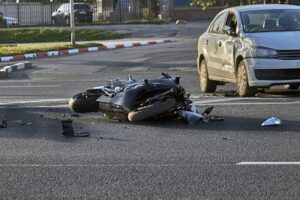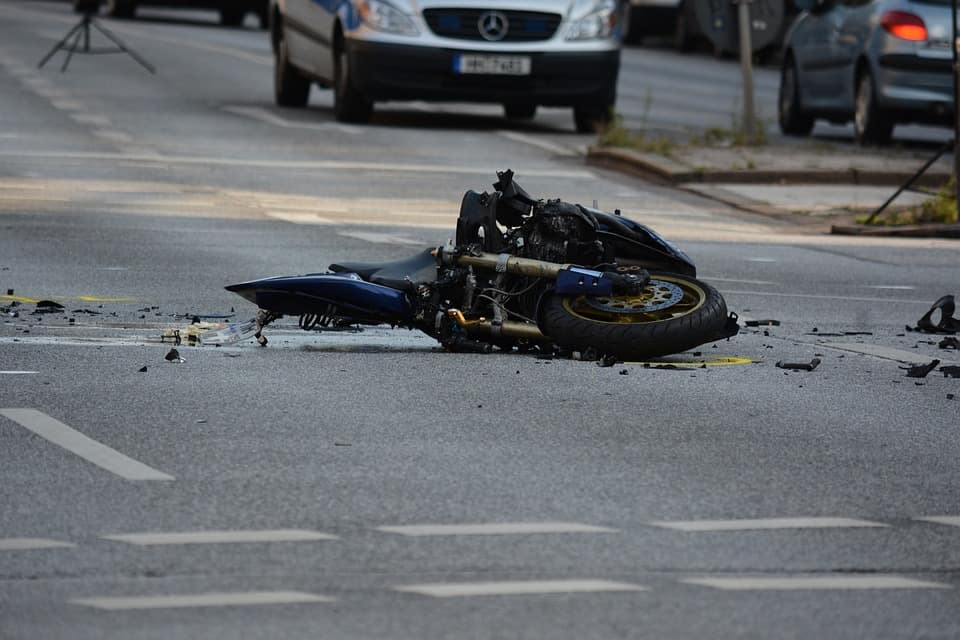 A Schererville man was recently killed in a motorcycle crash involving a pickup truck in Portage, IN. Portage police are reportedly still investigating, but the incident reveals the risks of motorcycling in general, including the surprising dangers posed by so-called no-contact collisions.
A Schererville man was recently killed in a motorcycle crash involving a pickup truck in Portage, IN. Portage police are reportedly still investigating, but the incident reveals the risks of motorcycling in general, including the surprising dangers posed by so-called no-contact collisions.
A Fatal Motorcycle Crash on Daniel Burnham Road
On October 13, 2017, 33-year-old Charles Ryan Strickland was operating his motorcycle at or near 6675 Daniel Burnham Road in Portage, IN. At that time, the unidentified driver of a pickup truck was heading eastbound on Daniel Burnham Road, approaching Mr. Strickland’s position. The truck driver then reportedly made a sudden left turn directly in front of Mr. Strickland’s motorcycle.
According to the Porter County Coroner, Mr. Strickland likely laid down his motorcycle and slid under the pickup truck in an apparent maneuver to evade contact. Despite his attempt at a no-contact collision, Mr. Strickland suffered severe bodily trauma. At approximately 1:37 p.m., the Portage Police arrived at the scene, where Mr. Strickland was pronounced dead from multiple injuries sustained in the crash.
The Unique Risks of Riding a Motorcycle
A motorcycle can be a great way to travel. Whether touring the country or even running mundane errands, going about one’s day can be so much better in the open air, with the sun shining and the wind at one’s back, all of which a motorcycle rider is uniquely positioned to enjoy. Unfortunately, there is also a serious downside, as motorcycles leave their riders much more vulnerable than many other methods of transportation.
With no metal frame surrounding the rider, as in cars and trucks, he or she is exposed to direct contact with other vehicles, obstacles, and the road itself, and is therefore much more likely to be seriously injured in a collision. According to the U.S. Department of Transportation’s Federal Highway Administration, motorcycle riders made up 15% of traffic deaths in 2012, despite accounting for less than 1% of the total miles driven. An all-too-common source of motorcycle injuries and deaths are left-turn collisions.
Vehicles Turning Left: A Heightened Responsibility
Vehicles turning left have a heightened responsibility to yield the right of way to other vehicles, including motorcycles. Essentially, a driver may only make a left turn when it is safe to do so, and only when there is no oncoming traffic. Unfortunately, far too many drivers misjudge the time that they have to make left turns safely, or they are distracted and do not check to see if there are other vehicles coming from the opposite direction, or they are impaired by drugs or alcohol. Consequently, they make sudden left turns when they should not, and serious collisions can happen. When a car or truck makes a reckless left turn in front of a motorcycle, the consequences can be catastrophic.
When encountering a vehicle turning left recklessly, a motorcycle rider can have very little time to react. As a result, the rider often crashes into the vehicle head on. Sometimes, as the result of the impact from such a collision, the rider can even be thrown from the motorcycle, only to land on the asphalt a great distance away from the point of impact.
And if a motorcyclist somehow successfully evades the vehicle making the left turn, it does not necessarily mean that the rider has escaped harm. As one may see from the facts alleged in the tragic case of Mr. Strickland, a motorcyclist may still suffer serious injuries and even death as a result of so-called no-contact collisions.
No-Contact Collisions
No-contact collisions are auto accidents in which the two or more vehicles involved do not actually come into contact with each other, but some other form of collision occurs, often with resultant injury. These types of no-contact collisions usually occur when one or more of the drivers involved take evasive action in order to avoid colliding with the other vehicle(s), only to collide with another vehicle or object not originally involved in the pending accident. A driver making an evasive maneuver may also suffer serious injuries by veering off of the roadway entirely and crashing into a ditch, a tree, or some other obstruction. A motorcyclist, in particular, may choose to “lay down” his or her bike to avoid collision with an oncoming vehicle, only to skid long distances on the asphalt roadway and suffer a severe injury known as “road rash.”
When two or more vehicles fail to collide directly but a driver or motorcyclist is still injured after taking evasive action, determining liability can sometimes prove more difficult. Generally speaking, the negligent party is the one who failed to carry out his or her duties as a driver, such as the duty to yield the right of way to oncoming traffic before making a left turn, thereby causing another driver to suffer injury by taking evasive action to avoid a crash, as any reasonable person would be expected to do. However, these no-contact collisions may often seem more subjective than crashes involving direct contact, and an experienced insurance adjuster may seize upon any hint of uncertainty to deny its driver’s liability, no matter how at fault he or she really is.
Chicago Motorcycle Crash Lawyers
As must seem all too clear, a motorcycle crash, especially in the case of no-contact collisions, can be a life-changing, confusing event. For this reason, many injured motorcyclists find that they could benefit from the guidance of an experienced motorcycle crash lawyer to help them get the financial compensation that they deserve, like the Chicago motorcycle crash lawyers at GWC Injury Lawyers, Illinois’ largest Personal Injury and Workers’ Compensation law firm.
If you or a loved one has been injured, please contact GWC today to schedule a free consultation with one of our attorneys. Call our office at (312) 464-1234 or click here to chat with one of our representatives.
<< BACK TO BLOG POSTS